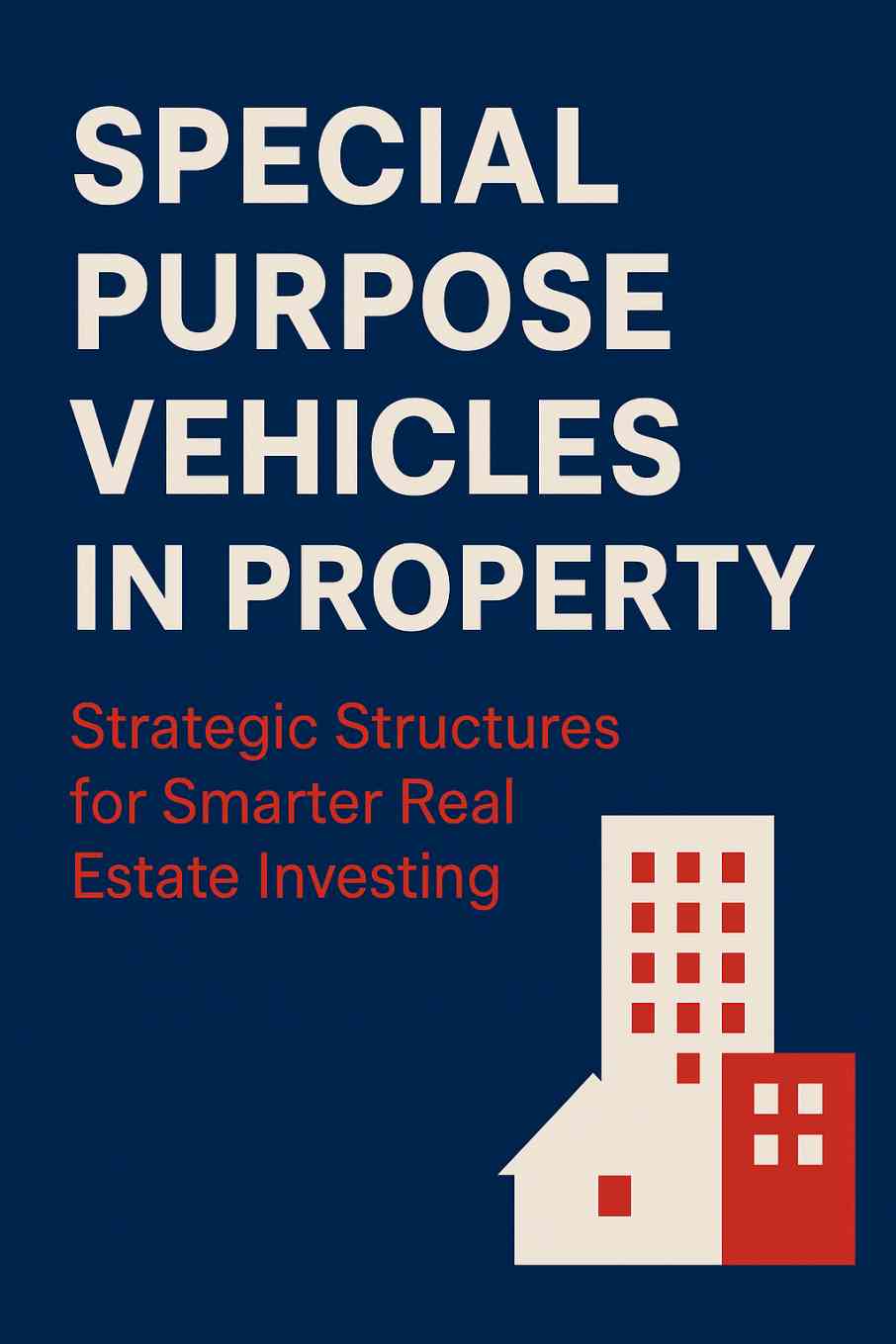Special Purpose Vehicles (SPVs) in Property: Strategic Structures for Smarter Real Estate Investing
- Authors
-
-

- Name
- Patrick Maflin
-

When it comes to property investment and development, the structure through which assets are held can significantly influence financial performance, tax efficiency, and legal exposure. One increasingly popular structure in the real estate world is the Special Purpose Vehicle (SPV); a standalone company set up solely to own or manage a specific property or project.
Often formed as a limited company, an SPV is legally distinct from its shareholders and has no purpose beyond the asset it was created to hold. This simplicity and focus are what make SPVs particularly useful in property transactions, where clarity of ownership and liability containment are critical.
Why Use an SPV for Property?
One of the main attractions of SPVs is their ability to isolate risk. By placing a property into its own legal entity, investors can ensure that any liabilities, whether from loans, tenant disputes, or legal claims, are confined to that specific asset. This ring-fencing can be particularly important for developers or investors managing multiple projects.
From a tax planning perspective, SPVs offer flexibility. In many cases, expenses related to the property can be offset more cleanly, and profits can be distributed in a more controlled fashion. Where property is sold, transferring shares in the SPV (rather than the property itself) may also result in tax or administrative efficiencies, depending on the jurisdiction.
SPVs are also widely used for structuring finance. Lenders often prefer SPVs because they allow for clearer security over the property and straightforward monitoring of project cash flows. For investors, particularly in joint ventures or syndicates, SPVs create a transparent framework for contributions, returns, and governance – each party knows their role, stake, and exit route.
Another benefit, especially in development or portfolio strategies, is the ability to release funds efficiently. Income from rental operations or capital generated through refinancing or sales can be distributed to shareholders through dividends or loans from the SPV. This clean structure allows for equity to be recycled quickly and redeployed into other projects.
Moving Property into a Limited Company
For many investors, a key consideration is whether to move property held in their personal name into a limited company. This process, often referred to as incorporation, involves selling the property to a newly formed company—usually structured as an SPV. In some cases, Incorporation Relief under Section 162 of the Taxation of Chargeable Gains Act 1992 (TCGA 1992) may apply, allowing capital gains tax on the transfer to be deferred if the properties are part of a genuine property business.
However, it is important to note that Stamp Duty Land Tax (SDLT) (or its regional equivalent) is generally payable on the transfer, as HMRC treats it as a sale. This applies even if you own both the property and the company, since SDLT is calculated on the property’s market value. Limited reliefs may apply in certain circumstances, such as when properties are transferred from a genuine partnership into a company, but careful planning is required.
While these costs can be significant, the long-term benefits of incorporation can outweigh them. Properties held within a limited company benefit from corporation tax rates on profits (often lower than higher-rate personal income tax), more efficient mortgage interest relief, and greater flexibility for reinvestment or succession planning. Additionally, by ring-fencing assets within a company, investors can protect personal wealth from business liabilities. Careful planning, often with the guidance of accountants and legal professionals, is essential to ensure the transfer is both tax-efficient and compliant.
Example Scenario
Imagine an investor who owns two buy-to-let properties in their personal name. Because of recent restrictions, they are no longer able to fully offset mortgage interest costs against rental income, and their profits are being taxed at the higher rate of personal income tax. After seeking professional advice, they set up a limited company as an SPV and transfer both properties into it. While the transfer incurs SDLT and professional fees, Section 162 relief allows the capital gains tax to be deferred. The long-term impact is significant: the rental profits are now subject to corporation tax (at a lower rate than personal income tax), mortgage interest is treated as a deductible business expense, and surplus income can be reinvested into acquiring additional properties through the company. This structure not only improves ongoing tax efficiency but also makes succession planning simpler, as shares in the company can be passed on more easily than the properties themselves.
Potential Pitfalls and Considerations
While the advantages of SPVs are compelling, they do come with certain costs and complexities. Each SPV requires its own legal setup, bank account, accounting records, and annual filings. For high-value or multi-investor projects, these costs are often well justified. But for smaller or privately held properties, the administrative burden may outweigh the benefits.
It’s also important to consider how tax authorities view SPVs. Over the years, there has been increasing scrutiny on structures that lack real economic substance. An SPV must serve a legitimate purpose and merely using one to avoid tax without any genuine activity or governance can raise red flags and lead to compliance issues.
Another practical limitation is that SPVs are generally created for a single purpose. If your investment strategy changes or the project evolves into something different, restructuring the SPV may be necessary. This can be a time-consuming and sometimes costly process.
Who Benefits Most from SPVs?
SPVs are best suited for structured, higher-value property transactions. They are commonly used in development projects, commercial acquisitions, and situations where multiple investors are involved. Buy-to-let portfolios held by companies may also benefit from being structured through SPVs, especially where financing, tax planning, or succession issues are part of the strategy.
However, not every investor needs one. A private individual purchasing a single residential property, with no plans for joint ownership or complex financing, is unlikely to gain much from an SPV, and may simply incur extra administrative burden.
Conclusion
Special Purpose Vehicles are a powerful tool for property professionals who want to manage risk, attract finance, and operate in a clean, defined structure. They can offer significant tax advantages and streamline everything from project setup to eventual exit. For individual investors, even transferring properties from personal ownership into a limited company structure can unlock access to these benefits—providing tax efficiency, clearer liability management, and a more flexible platform for long-term portfolio growth.
That said, SPVs and company structures aren’t suitable in every case. It’s important to weigh the benefits against the practical costs and obligations. If you’re considering incorporating your properties or using an SPV for your next project, it’s well worth seeking professional advice to ensure the structure is sound, compliant, and aligned with your long-term goals.


